With spread offense variations being the norm throughout college football, zone run plays are naturally used very frequently.
Zone runs will most frequently hit one of the B-gaps, even if that wasn’t the initial aiming point of the play. As you can see below, a typical even alignment (four defensive linemen) doesn’t allow for the defense to close both B-gaps at the line of scrimmage (meaning one of the B-gaps will not be occupied by a defensive linemen):
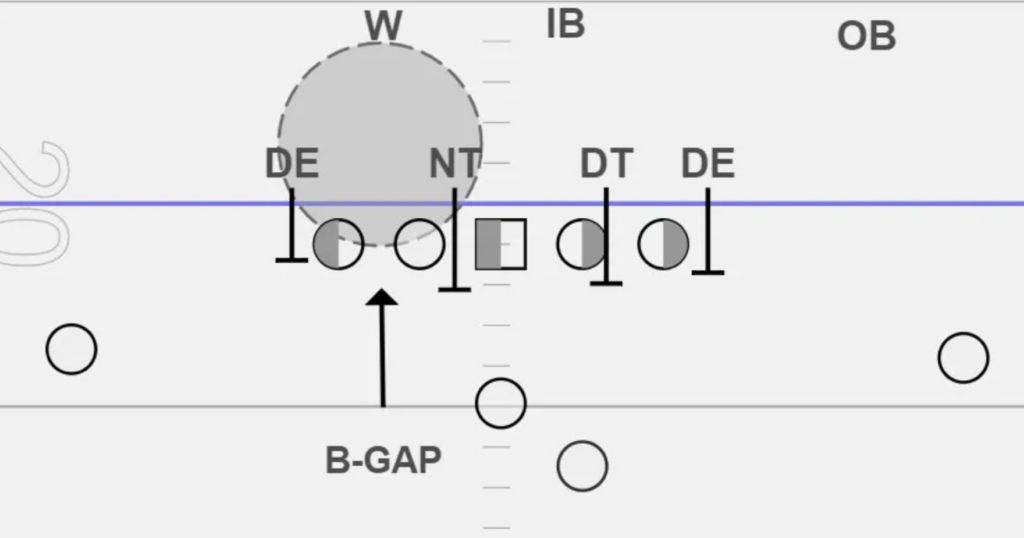
To solve this problem, a lot of defensive coordinators turned to the “Tite” front to close both B-gaps at the line of scrimmage:
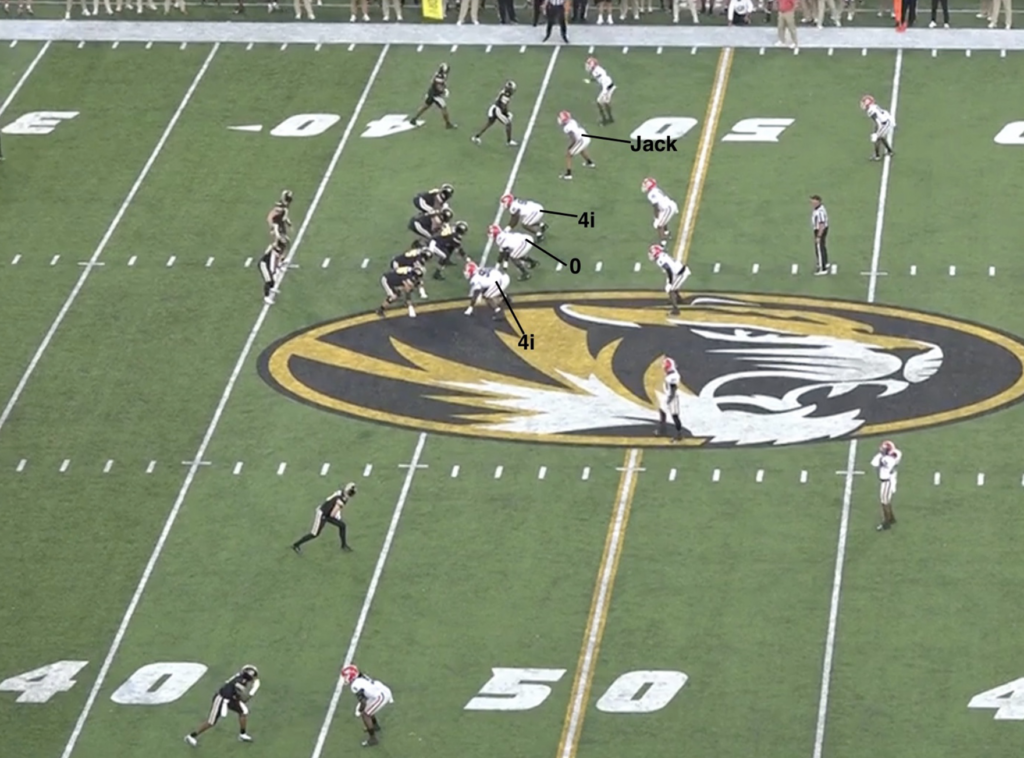
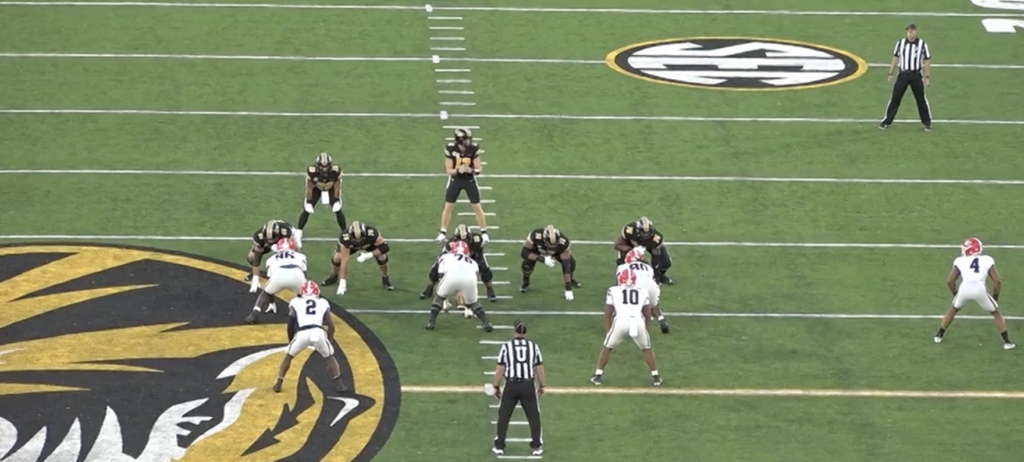

As you can see above, the Tite front uses three defensive linemen, and two of them are aligned as 4i-techs (inside shoulder of the offensive tackle) to close both B-gaps at the line of scrimmage. This alignment essentially negates an offense’s ability to effectively use inside zone runs by clogging the interior gaps and forcing inside zone runs to bounce outside to free hitters.
See how this works in the following clip, when Tennessee tries running Zone Insert against Georgia’s Tite front:
Although the Tite front, in theory, solves the issues defenses face against offenses who use a lot of zone run plays, it also has it weaknesses. One clear weakness, among others, is that the Tite front is not great for pass rush because all three defensive linemen are lined up inside the offensive tackles.
While the Tite front is a good option that works well for many teams, a defense can still spill zone run plays to the outside and close both B-gaps without aligning a defensive linemen in both B-gaps before the snap. A popular way to do this is by having your defensive end(s) use a HEAVY technique.
In a HEAVY technique, the defensive end is reading the offensive tackle. If the offensive tackle base blocks out towards the defensive end, the defensive end will rip inside to the B-gap instead of holding the edge/C-gap.
Just like the Tite front, HEAVY techniques serve to clog interior gaps and spill zone run plays to the outside. One possible advantage utilizing HEAVY techniques has over the Tite front is that HEAVY techniques rely on post-snap movement to plug interior gaps rather than pre-snap alignment.
Because of this, having your defensive end(s) play HEAVY techniques can often throw offensive linemen off because offensive linemen are sometimes too dead set on blocking a particular man rather than staying on their zone blocking paths, and this can give the defensive end a free path into the backfield. See how this works in the following clips from Ohio State’s 2022 matchup against Arkansas State:
By having the 5-tech defensive end play a HEAVY technique, the post-snap run fits were different than what Ohio State’s offensive line expected based on the defense’s pre-snap alignment. Paris Johnson was too dead set on the blocking that defensive end, so he didn’t stay on his zone blocking path out to the Sam LB, which made the Sam LB an unblocked free hitter.
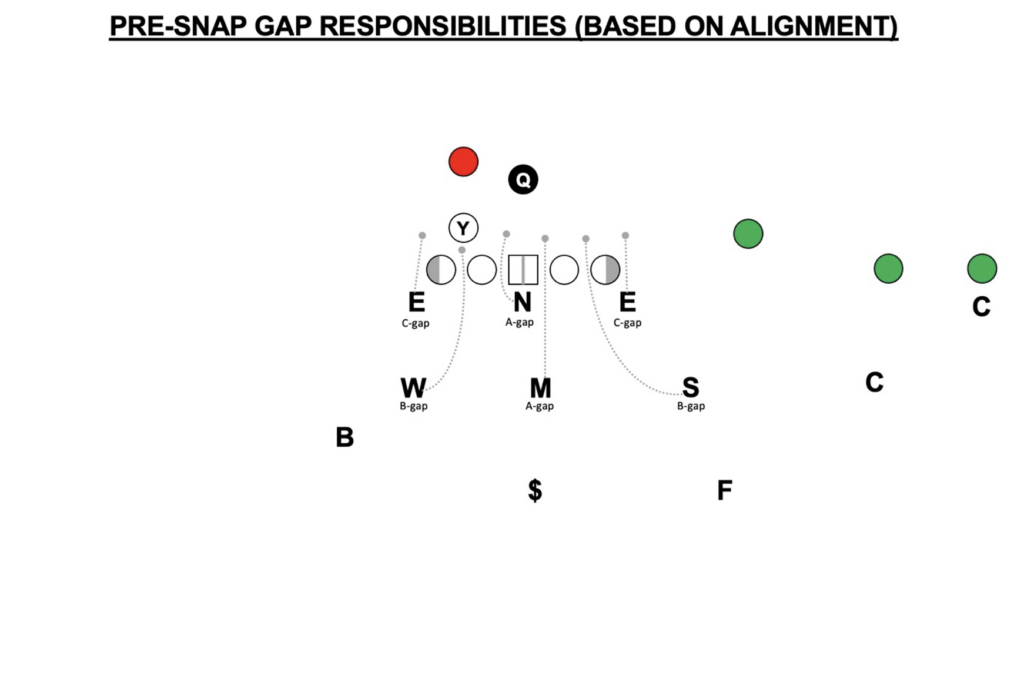
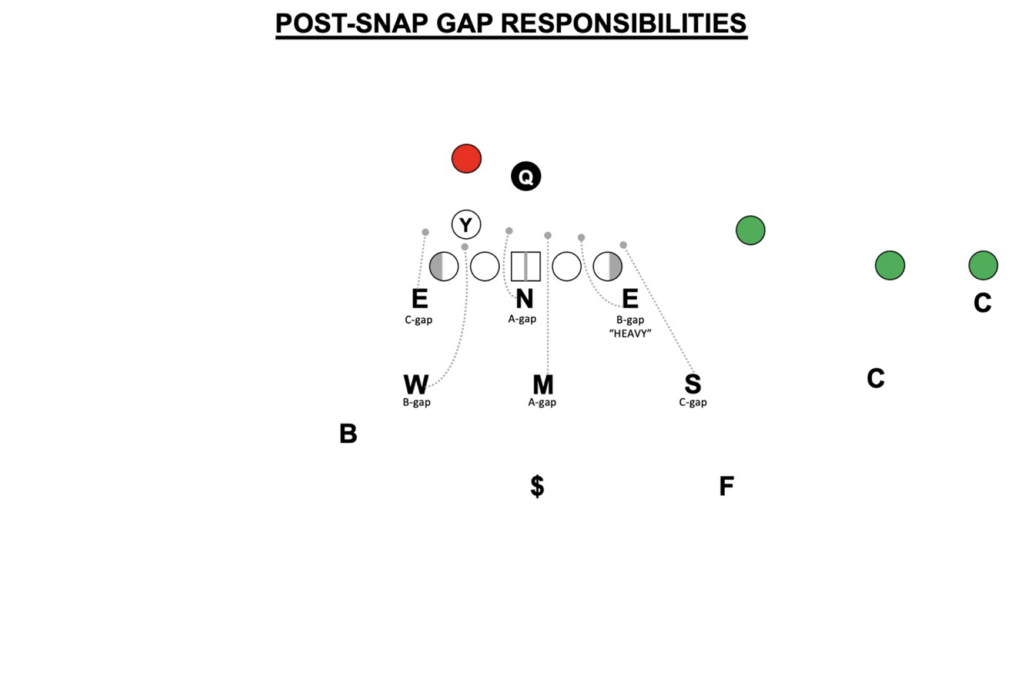
Another example of this can be seen below, in a clip from Ohio State’s 2021 matchup against Tulsa. Ohio State runs Mid Zone towards Tulsa’s HEAVY 5-tech defensive end and, once Dawand Jones base blocks out on him, the 5-tech defensive end rips inside to plug the B-gap and forces Treveyon Henderson to bounce outside to an unblocked free hitter, who stops him for a short gain:
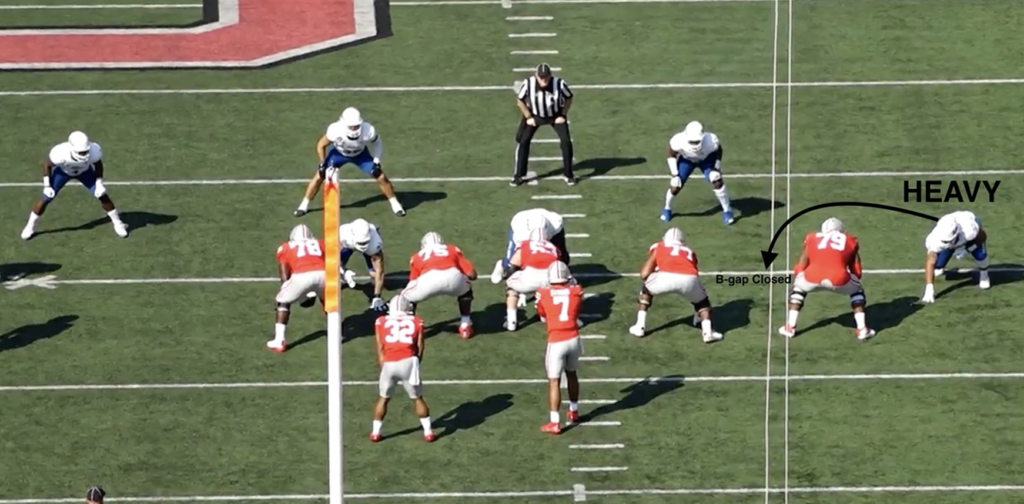
Furthermore, HEAVY techniques are not just for teams who base out of 3-down fronts on defense – they can also be utilized by teams who base out of 4-down fronts. See the following clip, for example, of Zach Harrison playing a HEAVY technique against Maryland’s Wide Zone run play below:
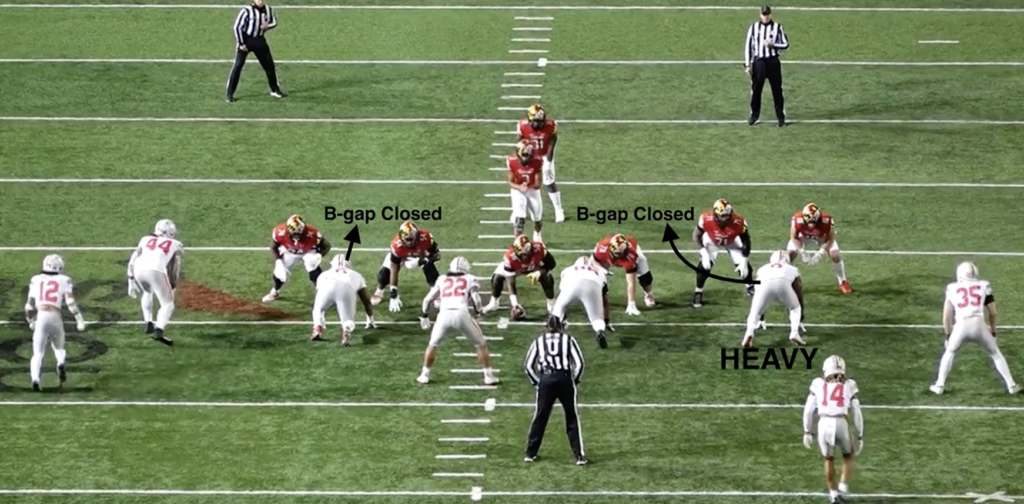
In this case, having Harrison play a HEAVY technique lead to a free path into the backfield and an easy tackle for loss.
In addition to the fact that utilizing HEAVY techniques can be advantageous over the Tite front due to the fact that the post-snap movement can throw offensive linemen off and lead to free paths into the backfield, another obvious advantage is that utilizing HEAVY techniques doesn’t sacrifice anything in pass rush. A defensive end who’s playing a HEAVY technique will still be aligned outside of the offensive tackle and be able to take a more traditional rush path against passing plays.
CONCLUSION
Because spread offenses that are zone-heavy in the run game have become so popular, defenses have responded by trying to clog interior gaps to spill zone run plays to the outside. This can be done through using a Tite front, line stunts, or by utilizing HEAVY techniques.
You can have your defensive ends play HEAVY techniques in either a 3-down front or a 4-down front, and one big advantage utilizing HEAVY techniques has over the Tite front is that you aren’t sacrificing anything in pass rush when using HEAVY techniques because the defensive end(s) will still be lined up outside of the offensive tackle(s).

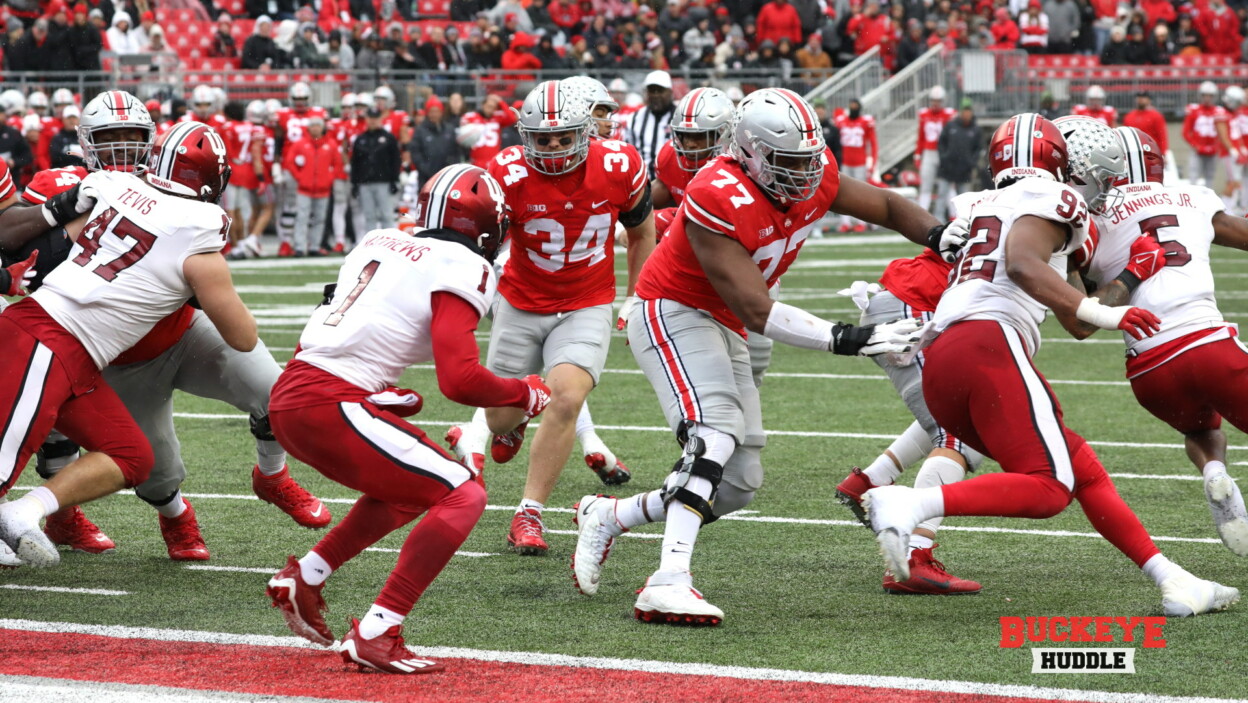




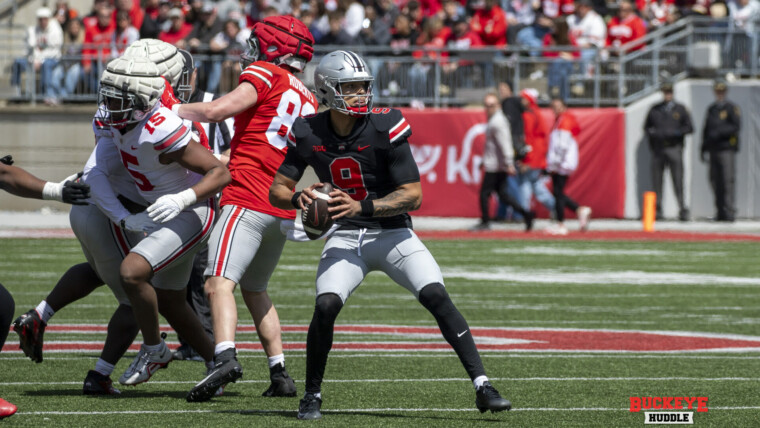
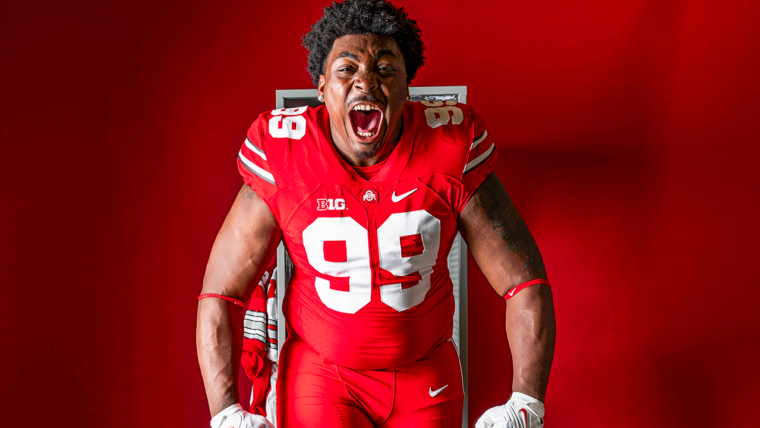
One Reply to Chalk Talk: The Heavy Technique
The Impact: Jamir Perez provides Buckeyes big body, athletic defensive tackle
The Impact: Luke Fahey gives Ohio State its long-awaited 2026 quarterback
Five-Star Quarterback Elijah Haven Impressed by Ohio State Culture
50 For 50: Another Productive Homecoming For Carnell Tate?
The Latest on Five-Star Offensive Tackle Felix Ojo
The Impact: Ohio State lands key commitment from cornerback Jordan Thomas
Do the Buckeyes Lead for the Nation’s Top Linebacker?
The Impact: Kayden Dixon-Wyatt is latest prototype receiver to commit to Ohio State